The block C shown in the figure is ascending with an acceleration a=3m/s2 by means of some motor not shown here. Find the acceleration of the bodies A and B of masses 10kg and 5kg respectively in m/s2, assuming pulleys are massless and friction is absent everywhere.
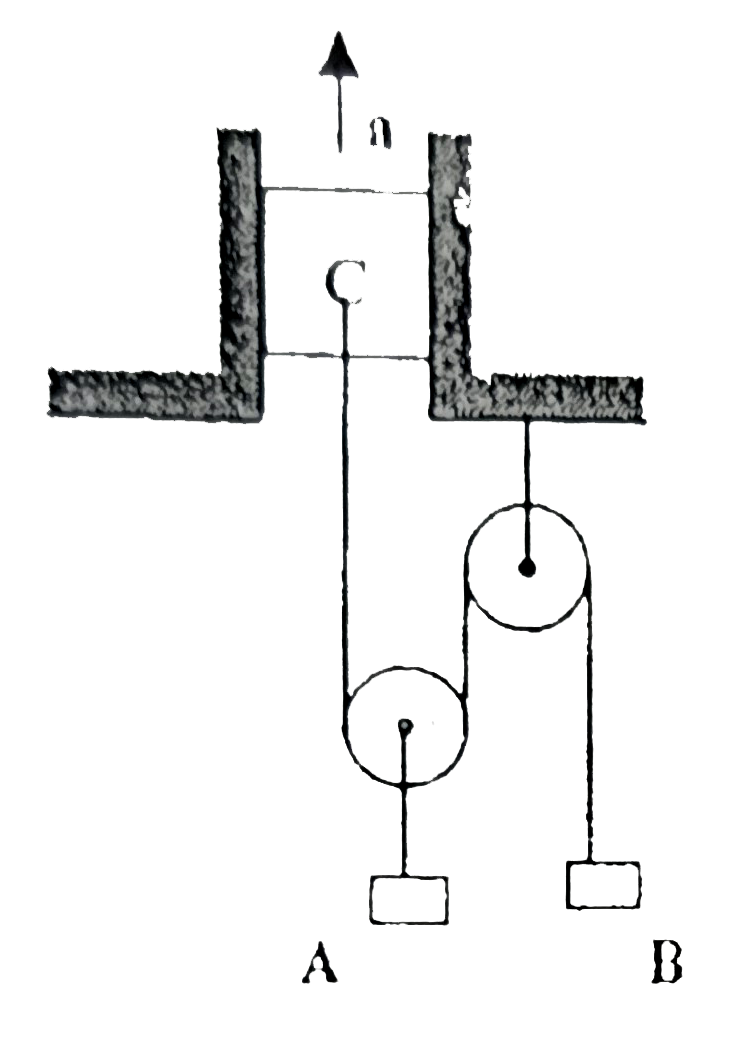
Drawing F.B.D. diagrams.
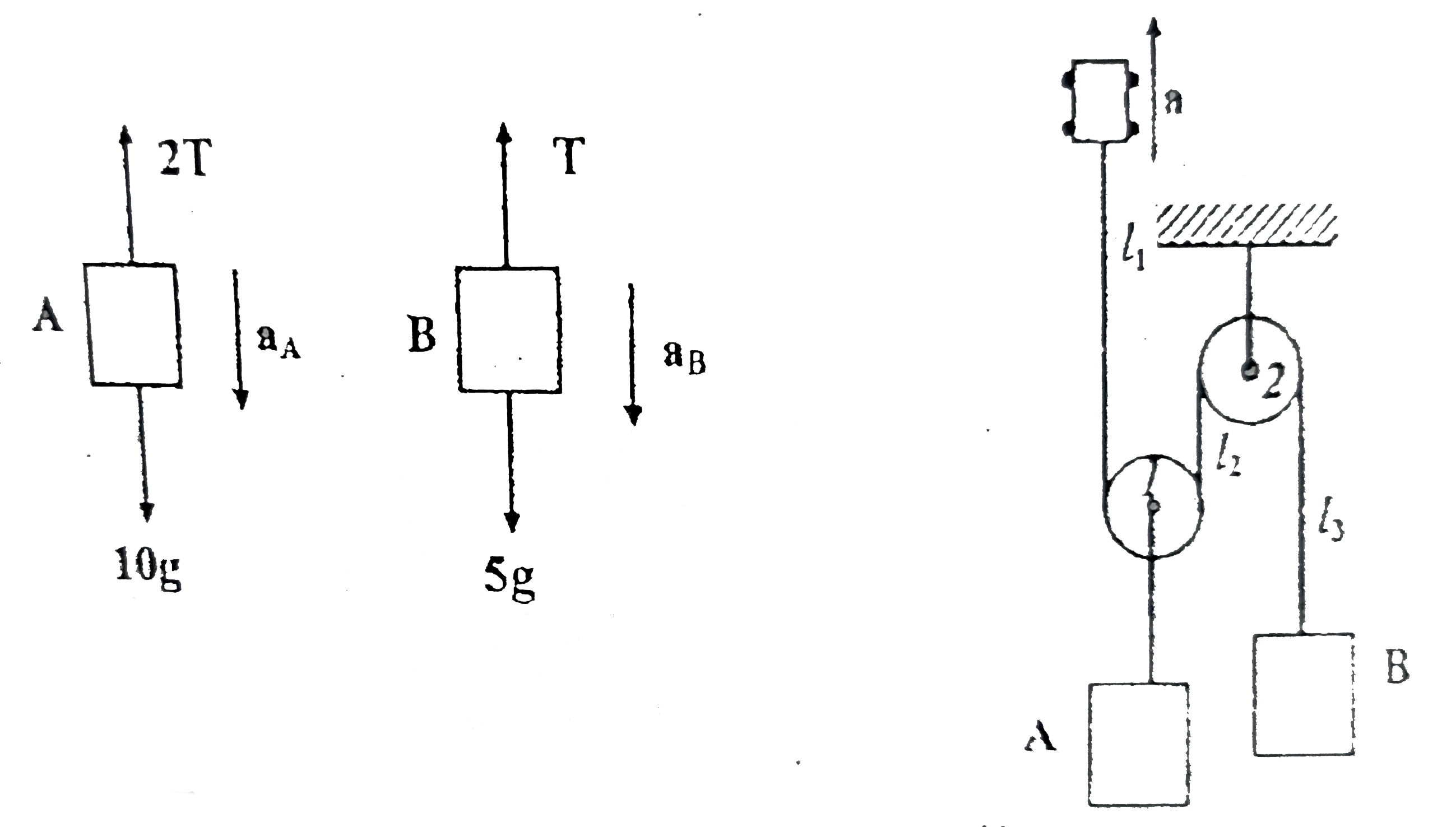
10g−2T=10aA (1)
5g−T=5aB (2)
T from equations (1) & (2) we get
10aA−10aB=0
⇒aA=aB
l1+l2+l3=constant
yE+yA+yA+yB= costant
Differentiating twice w.r.t. time,
a+2aA+aB=0
2aA+aB=−3
or 3a0=−3
⇒aB=−1m/s2, aA=−1m/s2
aA=aB=1m/s2 upwards
Topper's Solved these Questions
Similar Questions
The elevator shown in figure is descending with an acceleration of 2ms2. The mass of the block A is 0.5 kg. What force is exerted by the block A on the block B?
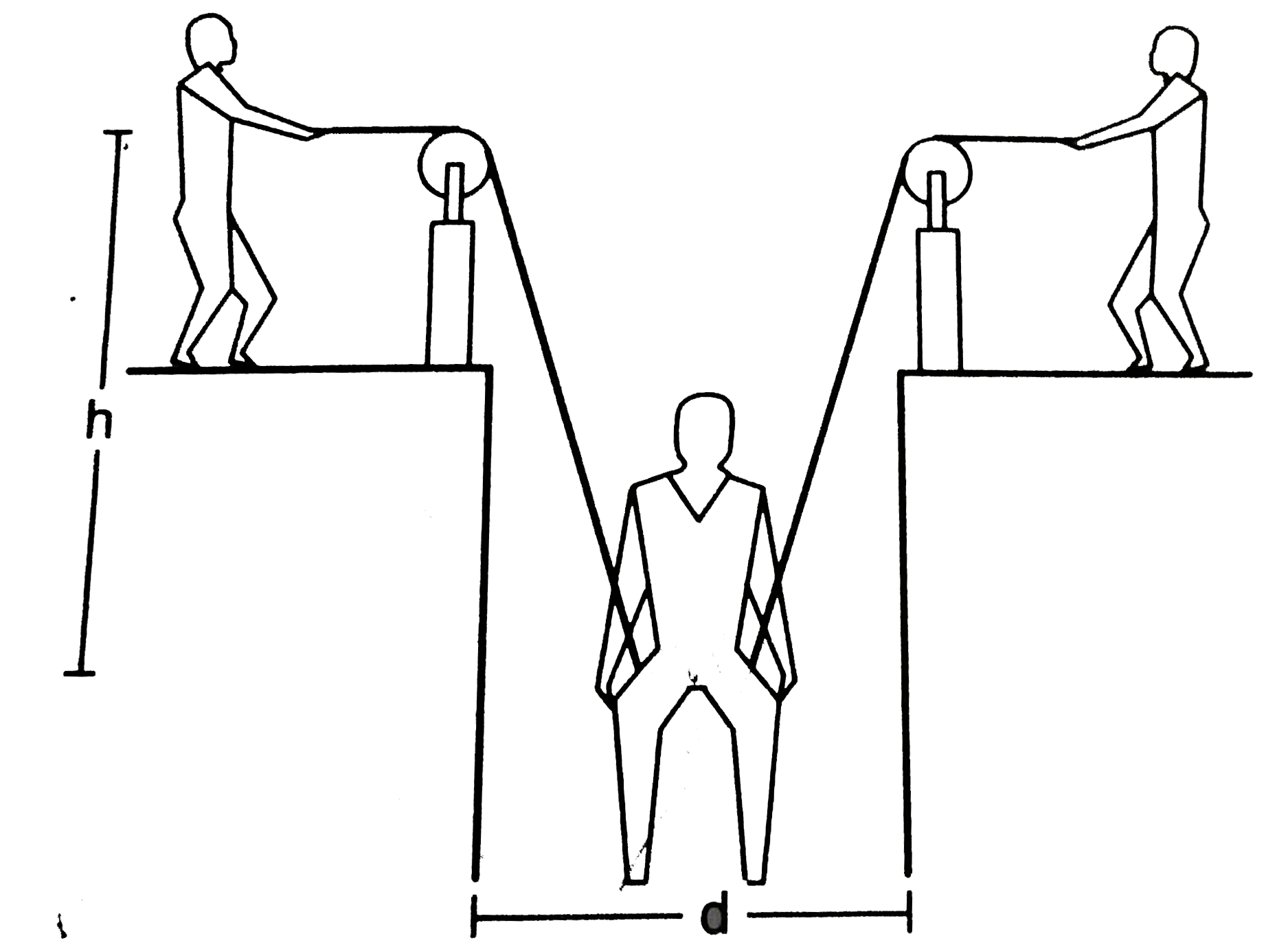
View SolutionThe elevator shown in figure is descending with an acceleration of 2ms2. The mass of the block A is 0.5 kg. What force is exerted by the block A on the block B?

View Solution
Knowledge Check
The elevator shown in figure is descending, with an acceleration of 2m/s2. The mass of block A is 0.5 kg. the force exerted by block A on block B is (mass of block B is 1 kg)
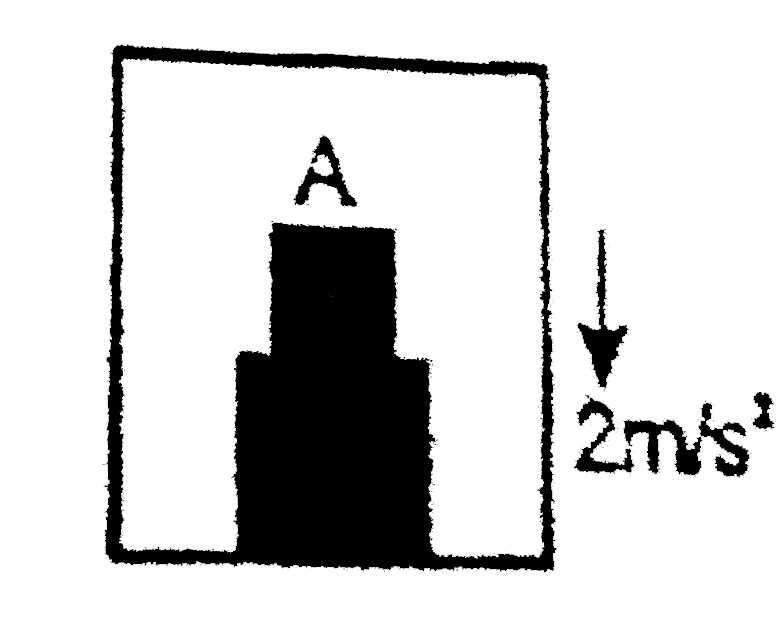 A2NB8NC6ND4N
A2NB8NC6ND4NFind the acceleration of the block of mass m. Assume pulleys are massless and frictionless.
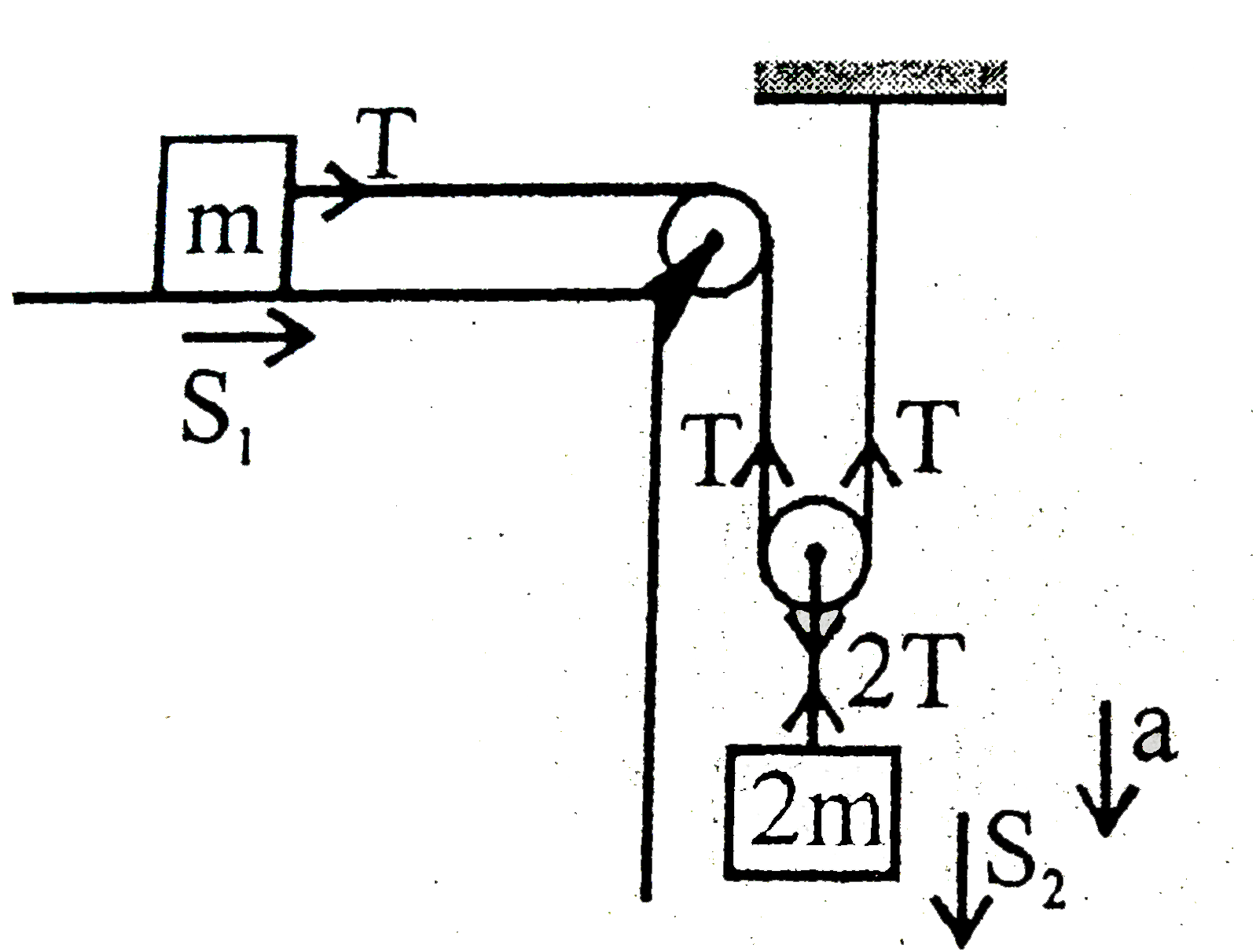 Ag/3B2g3Cg2DNone
Ag/3B2g3Cg2DNoneThe acceleration of the block (A) and (B) respectively in situation shown in the figure is: (pulleys and string are massless).
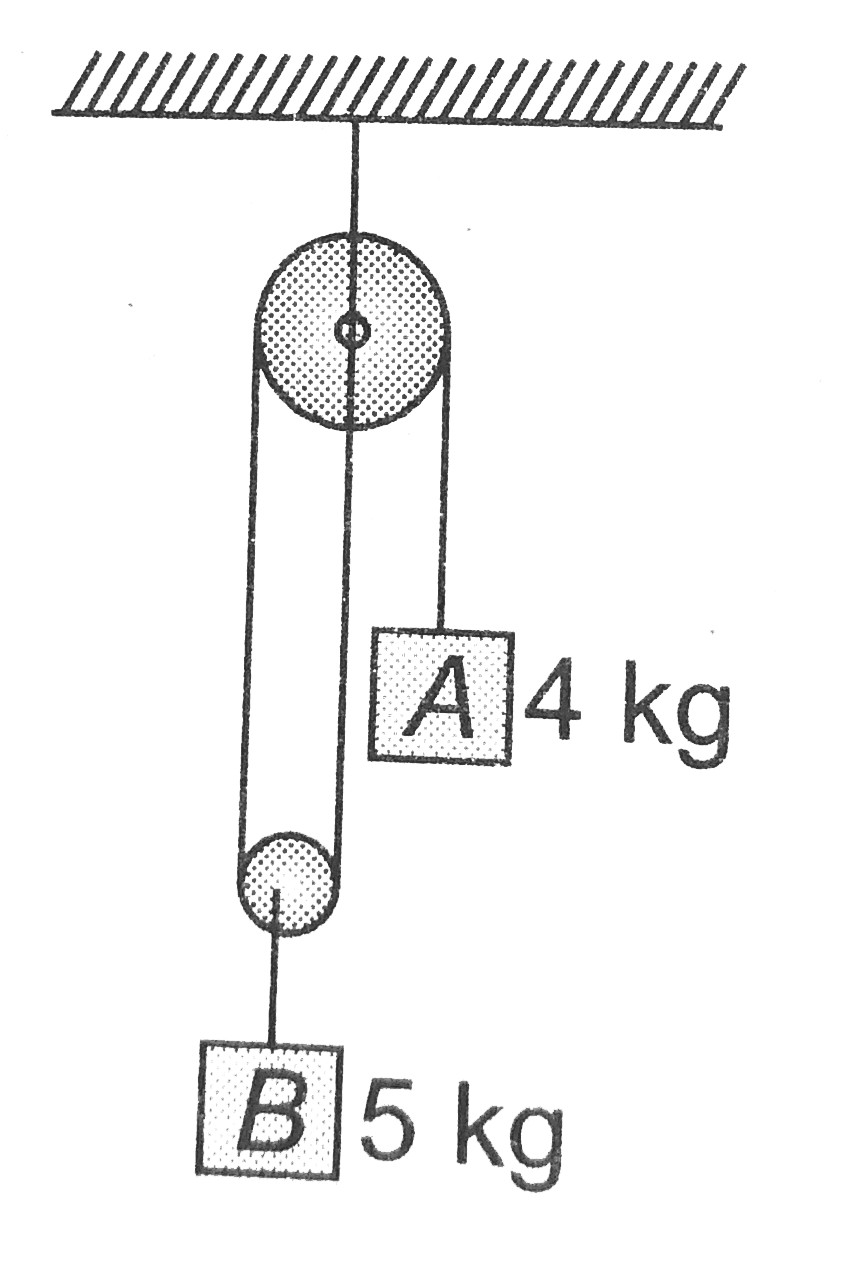 A2g7 downward, g7 upwardB2g3 downward, g3 upwardC1013g downward, 5g13 upwardDnone of these
A2g7 downward, g7 upwardB2g3 downward, g3 upwardC1013g downward, 5g13 upwardDnone of these
The magnitudes of accelerations of blocks of mass 2 kg and 4 kg are respectively . ( Pulleys and threads are massless) ( g = 10 m/s2)
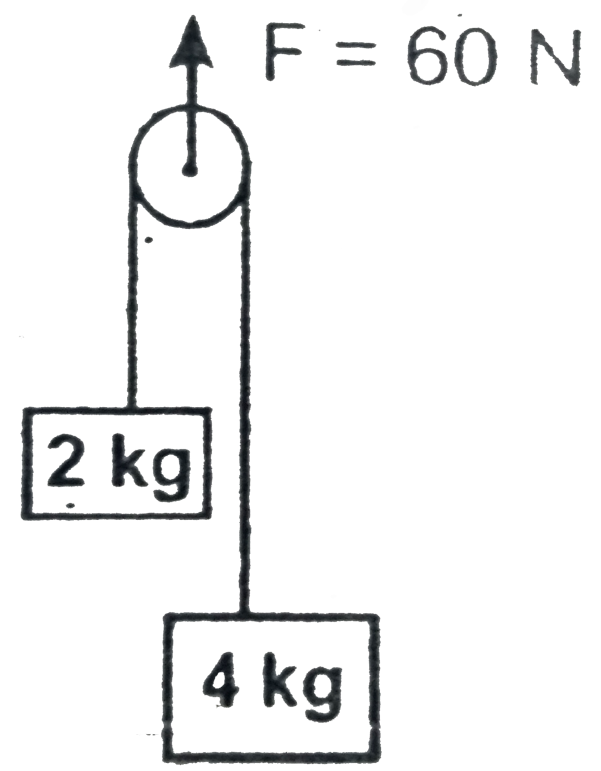
View SolutionIn the figure shown the man of mass 60kg is lowering a block of mass 10kg with an acceleration of 2m/s2. Find the reading of the machine.
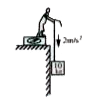
View SolutionIn the figure shown the man of mass 60kg is lowering a block of mass 10kg with an acceleration of 2m/s2. Find the reading of the machine.

View SolutionTwo Block A and B of masses 10kg and 6kg respectively are connected through pulley as shown in figure. Find acceleration of block A.
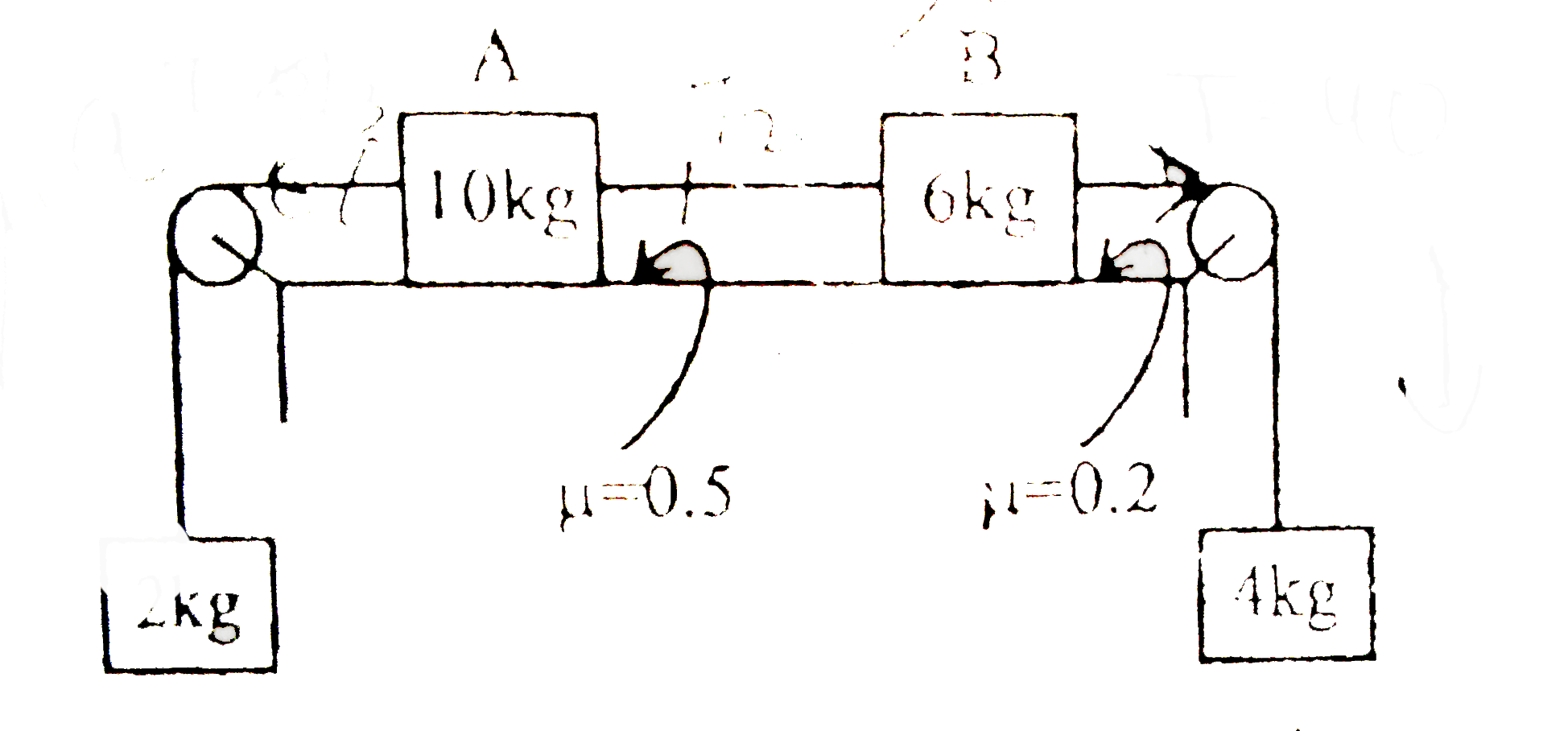
View SolutionIn the system shown in figure mB=4kg , and mA=2kg . The pulleys are massless and friction is absent everywhere. The acceleration of block A is.
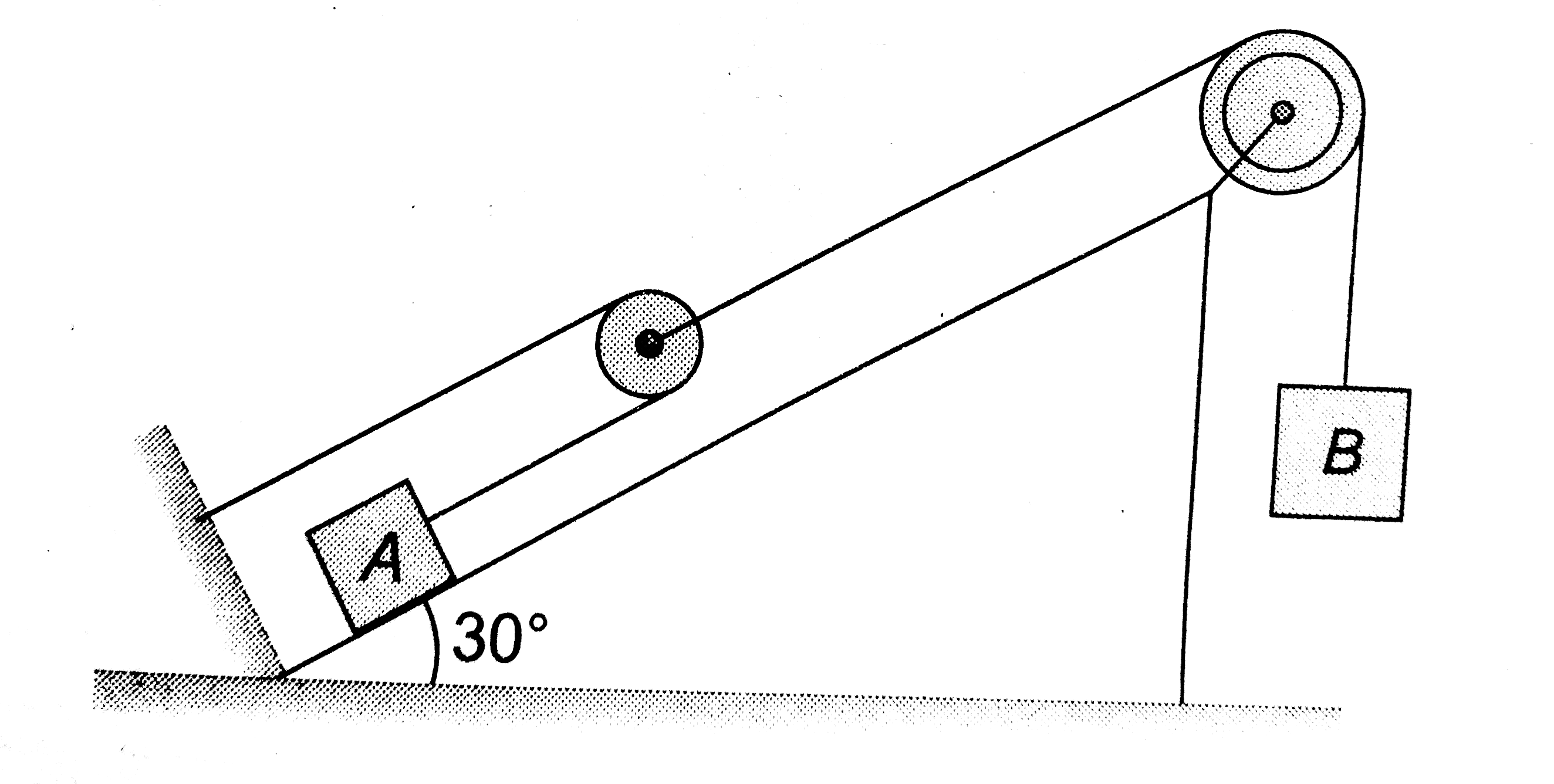
View Solution
